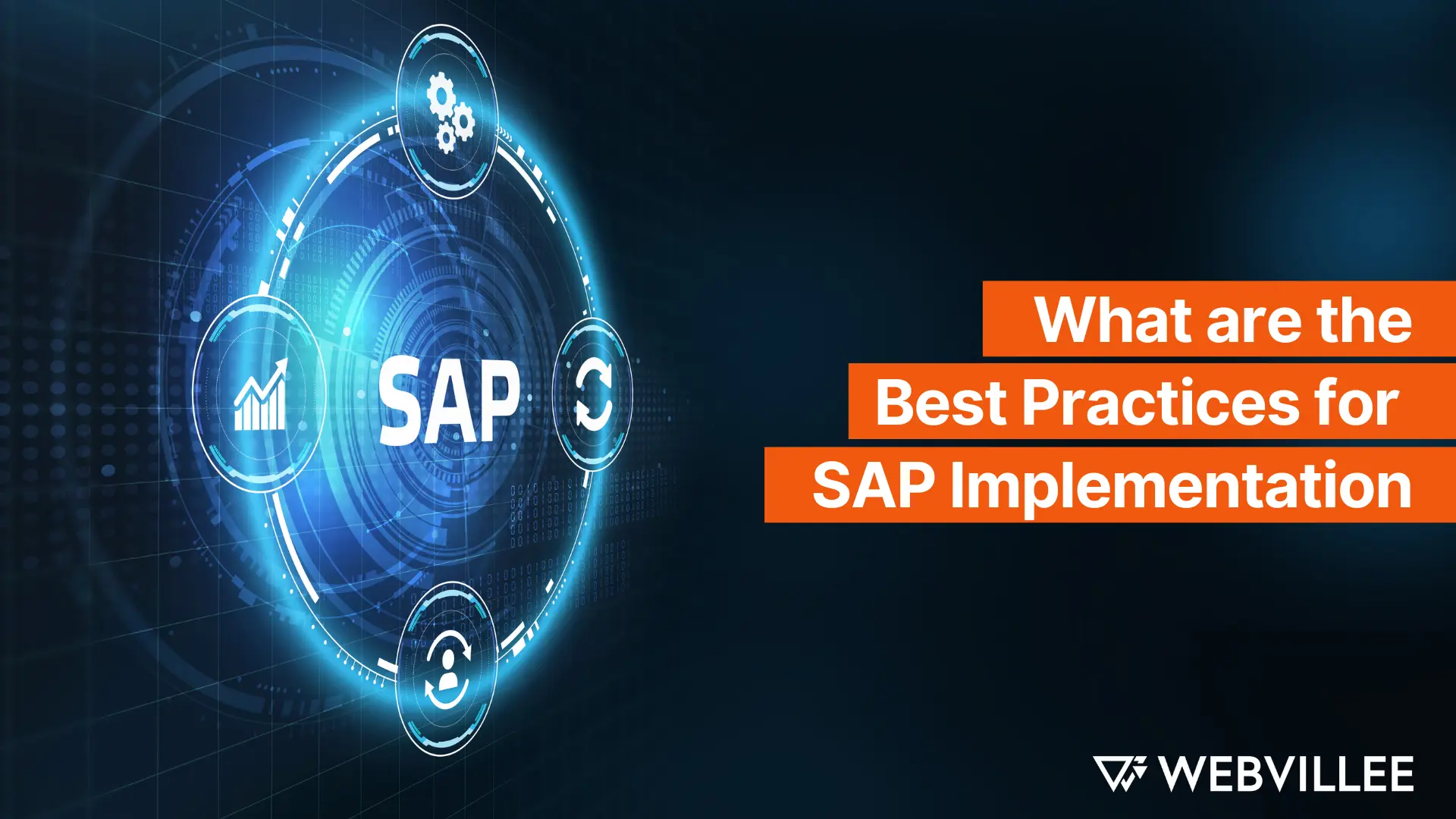Businesses need SAP to Implement SAP (Systems, Applications, and Products) is a significant undertaking for any organization. As one of the leading enterprise resource planning (ERP) systems globally, SAP offers a wide range of functionalities to streamline operations, enhance productivity, and drive growth.
However, successful SAP implementation requires careful planning, strategic execution, and adherence to best practices. In this blog, we’ll explore the key best practices for SAP implementation, empowering businesses to navigate the SAP journey effectively and unlock the full potential of their investment.
What is SAP Implementation?
SAP implementation refers to deploying SAP software within an organization to automate business processes, integrate systems, and optimize workflows across departments. It involves various stages, including planning, customization, configuration, testing, training, and deployment, to ensure a smooth transition to the new system.
Key Components of SAP
- Project Planning: Define project scope, objectives, timelines, and resource requirements to establish a clear roadmap for SAP implementation.
- Business Process Analysis: Analyze existing business processes, identify pain points, and define requirements to align SAP functionalities with organizational needs.
- System Configuration: Customize SAP modules, workflows, and settings to meet specific business requirements, industry standards, and regulatory compliance.
- Data Migration: Transfer existing data from legacy systems to SAP, ensuring data integrity, accuracy, and consistency throughout the migration process.
- Testing and Quality Assurance: Conduct comprehensive testing, including unit testing, integration testing, and user acceptance testing, to validate system functionality and identify and address any issues or bugs.
- Training and Change Management: Provide training and support to users to ensure a smooth transition to the new system and foster user adoption and engagement.
- Go-Live and Support: Deploy the SAP system into production, monitor performance, and provide ongoing support and maintenance to address any issues or challenges post-implementation.
Best Practices for SAP Implementation
Define Clear Objectives and Scope
Establish clear objectives, goals, and scope for the SAP implementation project to align with business priorities and requirements. Define key performance indicators (KPIs) and success criteria to measure the effectiveness and impact of the implementation.
Engage Stakeholders and End Users
Involve stakeholders, business leaders, and end users early in the SAP implementation process to gain buy-in, gather feedback, and ensure alignment with business needs and expectations. Foster open communication, collaboration, and participation throughout the project lifecycle.
Conduct Thorough Business Process Analysis
Conduct a comprehensive analysis of existing business processes to identify inefficiencies, gaps, and opportunities for improvement. Define clear business requirements and objectives to guide system configuration and customization.
Customize SAP to Meet Business Needs
Customize SAP modules, workflows, and functionalities to align with specific business requirements, industry standards, and best practices. Avoid excessive customization that may lead to complexity, maintenance issues, and compatibility issues during upgrades.
Ensure Data Quality and Integrity
Prioritize data quality and integrity throughout the data migration process. Cleanse, validate, and consolidate data from legacy systems to ensure accuracy, consistency, and completeness in the SAP system. Develop data migration strategies and protocols to minimize data migration risks and ensure a smooth transition.
Implement Robust Testing Strategies
Develop comprehensive testing plans and strategies to validate system functionality, performance, and usability. Conduct rigorous testing, including unit testing, integration testing, and user acceptance testing, to identify and address any issues or defects before deployment.
Provide Training and Support
Invest in training and support programs to educate users on SAP functionalities, processes, and best practices. Offer hands-on training, workshops, and resources to empower users to maximize the benefits of the SAP system and foster user adoption and engagement.
Plan for Change Management
Develop a change management plan to address organizational culture, mindset, and resistance to change. Communicate the benefits of SAP implementation, address concerns and misconceptions, and provide ongoing support and guidance to facilitate a smooth transition.
Monitor Performance and Continuous Improvement
Monitor system performance, user feedback, and key performance indicators post-implementation to identify areas for improvement and optimization. Implement feedback mechanisms, conduct regular reviews, and prioritize continuous improvement initiatives to enhance system usability, efficiency, and effectiveness.
Conclusion
SAP implementation is a complex and challenging process that requires careful planning, strategic execution, and adherence to best practices. By defining clear objectives, engaging stakeholders, conducting thorough business process analysis, and customizing SAP to meet business needs, organizations can maximize the benefits of SAP and drive business success.
With a focus on data quality, testing, training, and change management, businesses can navigate the SAP journey effectively and unlock the full potential of their investment. By embracing best practices for SAP implementation, organizations can streamline operations, enhance productivity, and drive growth in today’s competitive business landscape.

